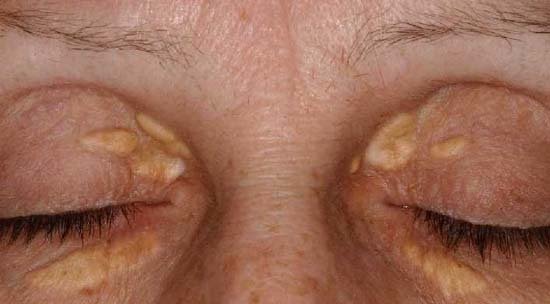
Cutaneous finding correlates to heart disease risk
Xanthelasma is a condition in which there is an infiltration of the skin by cholesterol-rich foam cells. Xanthelasma can present as sharply demarcated yellowish plaques. These deposits of cholesterol are typically found around the eyelids (Xanthelasma palpebrarum, XP). Prevalence is higher in women than in men with peak presentation in the 4th or 5th decade of life. Typically, XP is symmetric and most commonly distributed on the upper eyelids. XP is not painful nor symptomatic, but they can be a disfiguring condition for patients.
A recent systematic meta-analysis examined whether serum lipids and risk of atherosclerosis is related to the presentation of XP. The review found serum levels of total cholesterol, and LDL (low-density lipoproteins) were significantly higher in patients who present with XP when compared to controls. Apolipoproteins (apos) may serve as predictors of the risk of cardiovascular diseases and the ratio of apo B and apo A1 is proposed to be a reliable tool for predicting cardiovascular risk. In this study, the serum levels of apo B in the patients with XP were significantly higher than those in the controls.
Furthermore, this study evaluated ultrasound CIMT (carotid intima-media thickness), a widely used and validated imaging technique for atherosclerosis. A higher value of CIMT correlates with higher risk for heart disease. In this study, patients with XP exhibited significantly higher CIMT than did controls. The researchers of this study concluded their results revealed that significantly higher serum TC (total cholesterol) levels were observed in the patients with XP and the XP patients also exhibit a significantly high risk of atherosclerosis.
Byline: Sarah B. W. Patton, MSHS, PA-C
Posted September 25, 2019
Original article adapted: Chang H-C, Sung C-W, Lin M-H, Serum lipids and risk of atherosclerosis in xanthelasma palpebrarum: A systematic review and meta-analysis, JAAD 2019; doi: https://doi.org/10.1016/j.jaad.2019.08.082.







